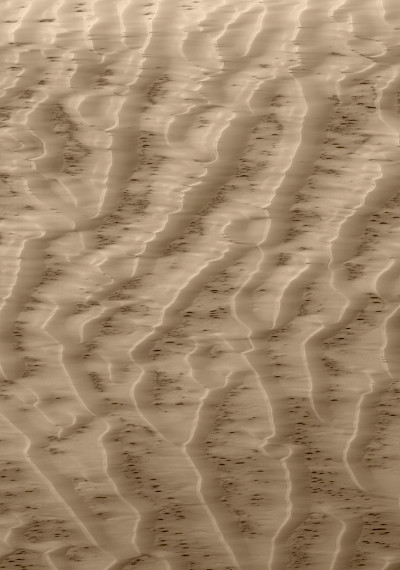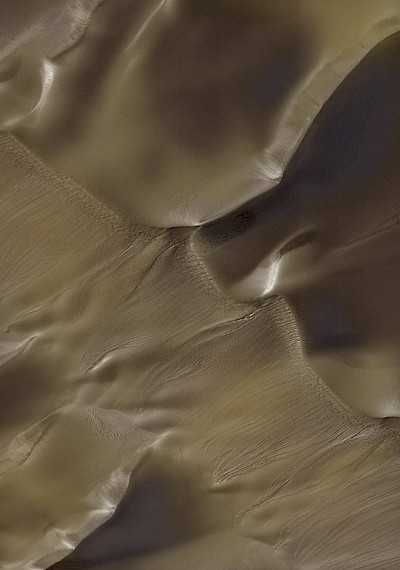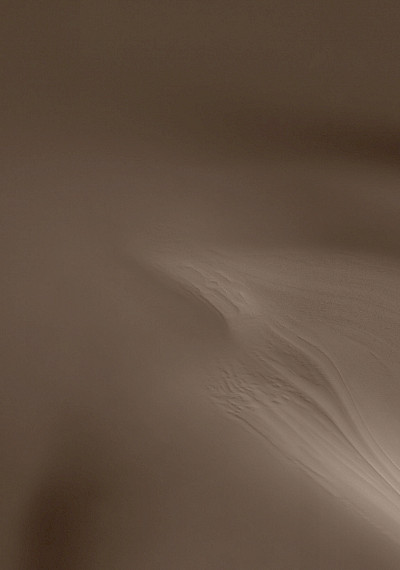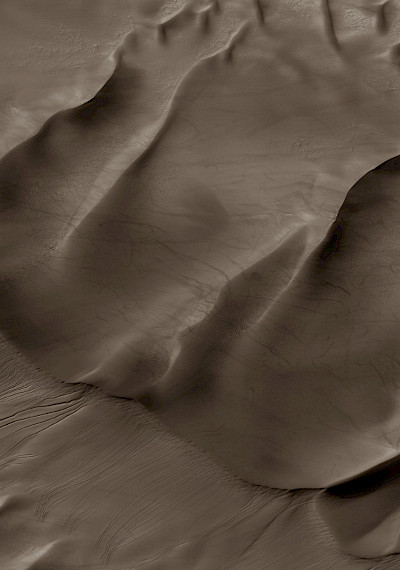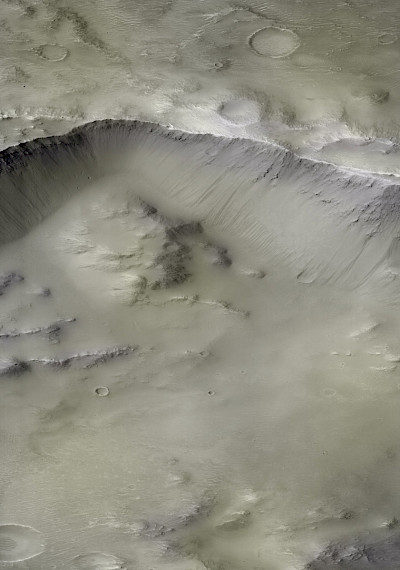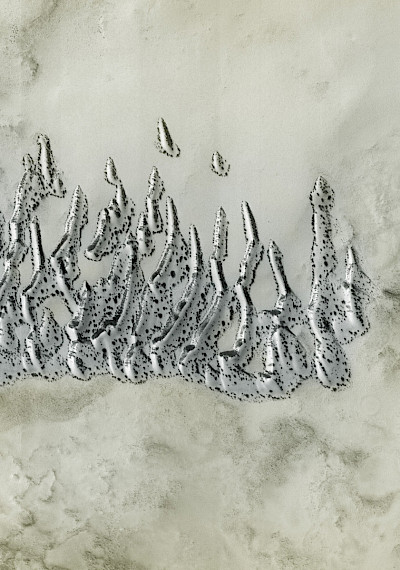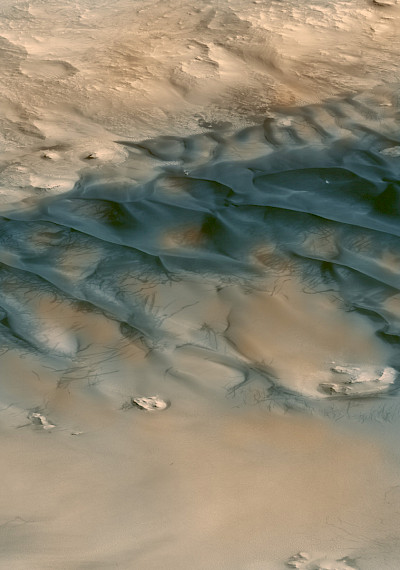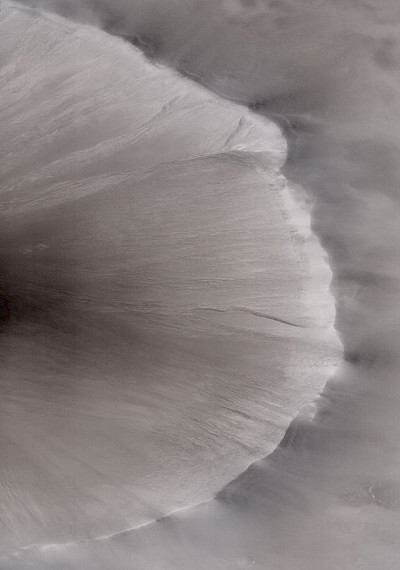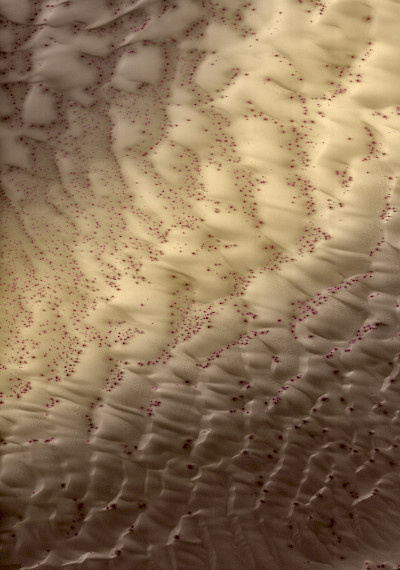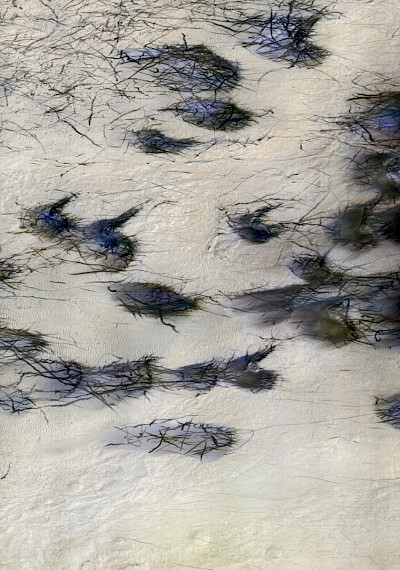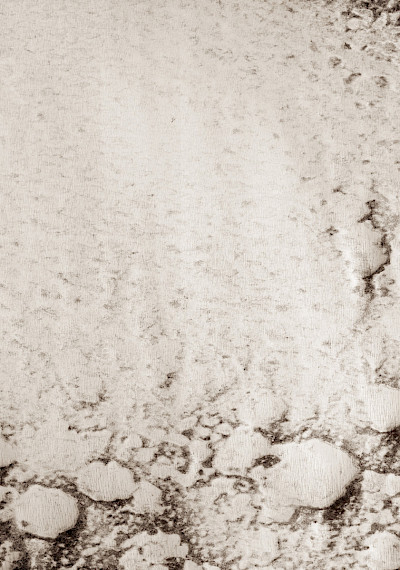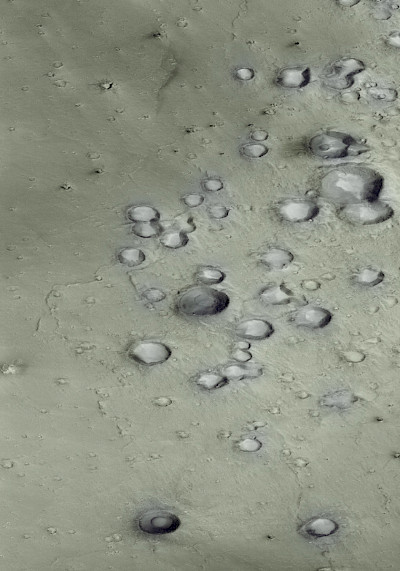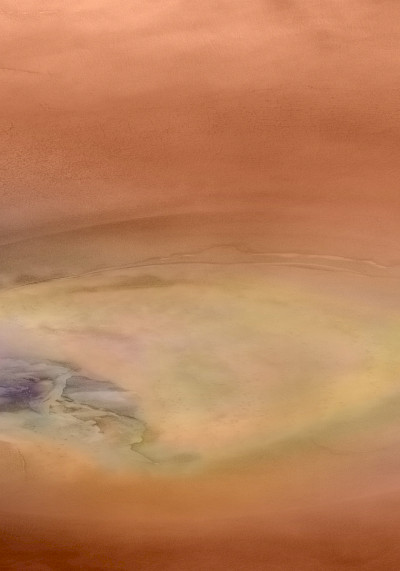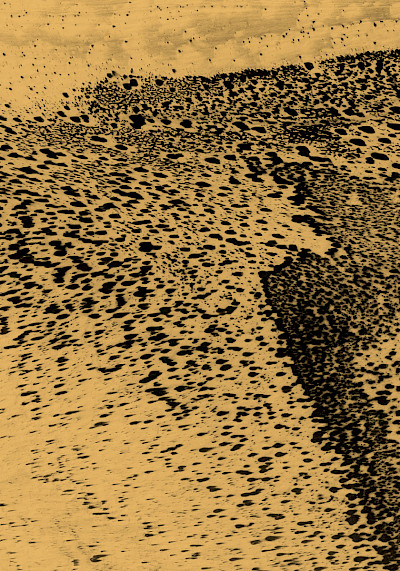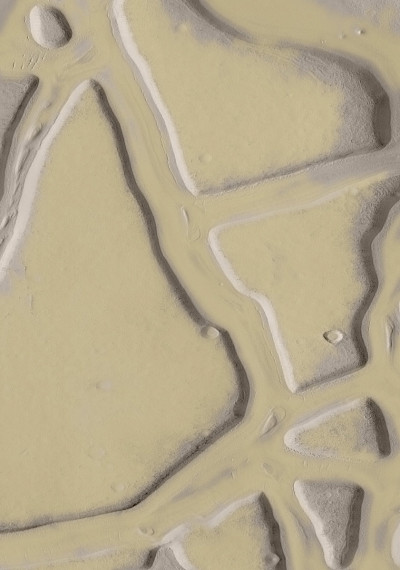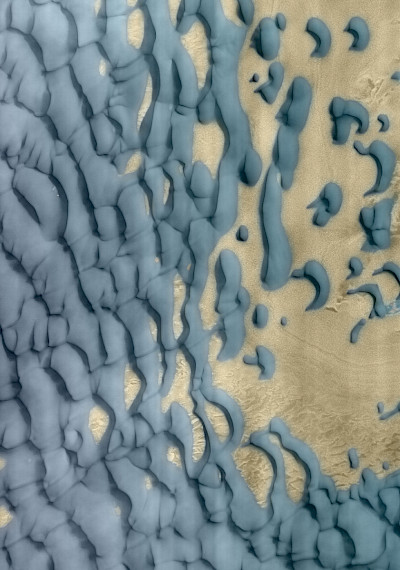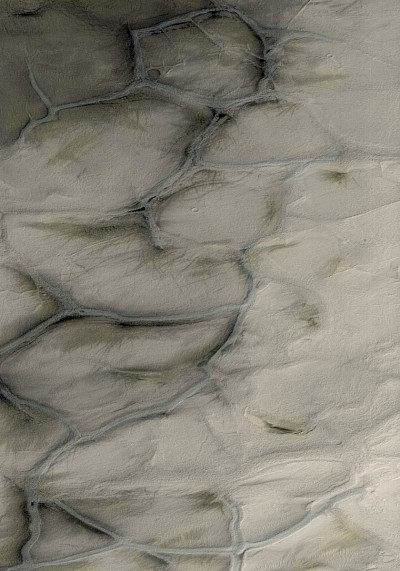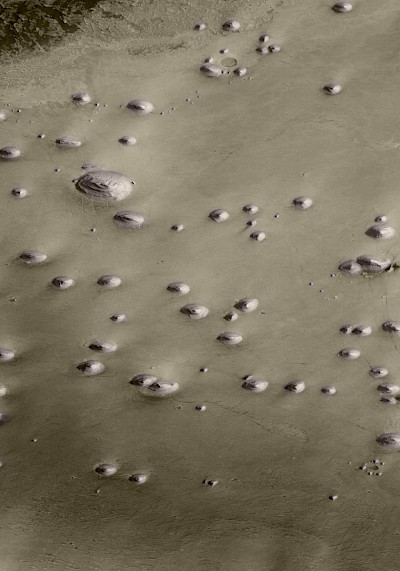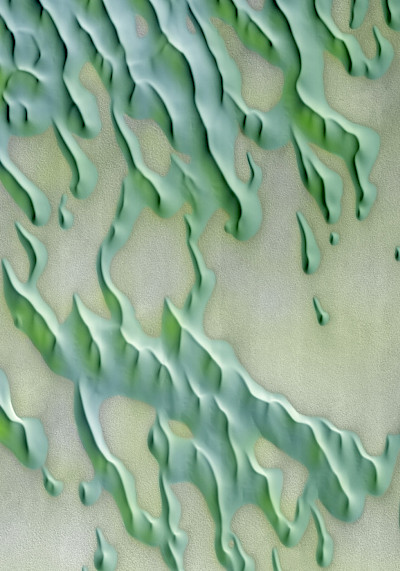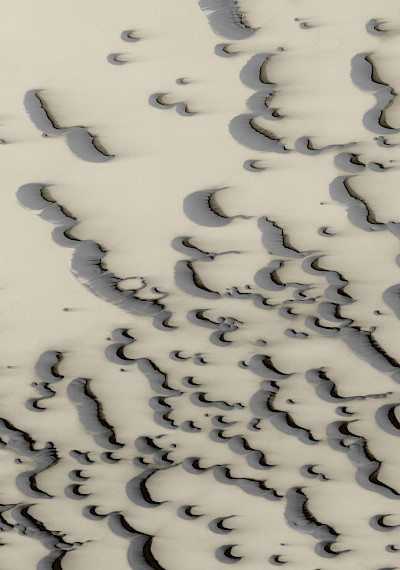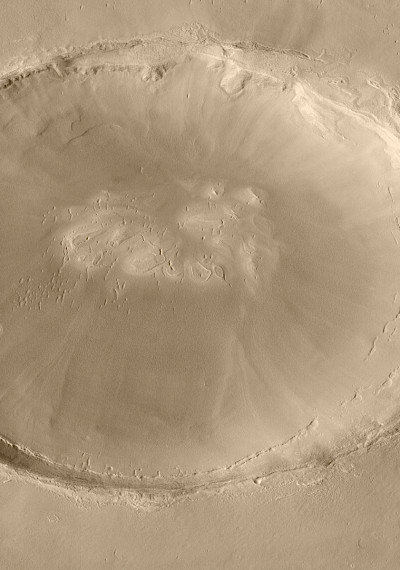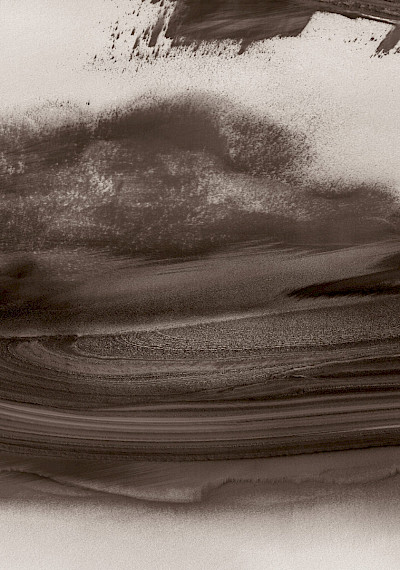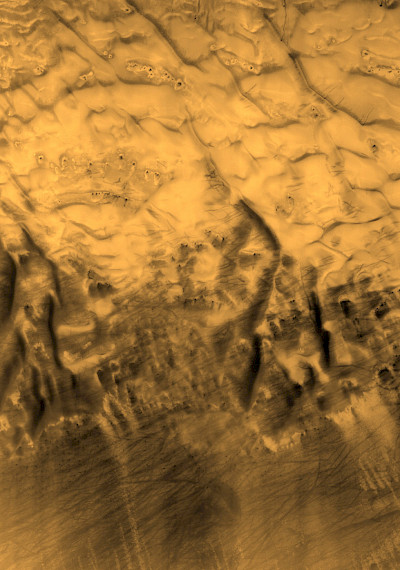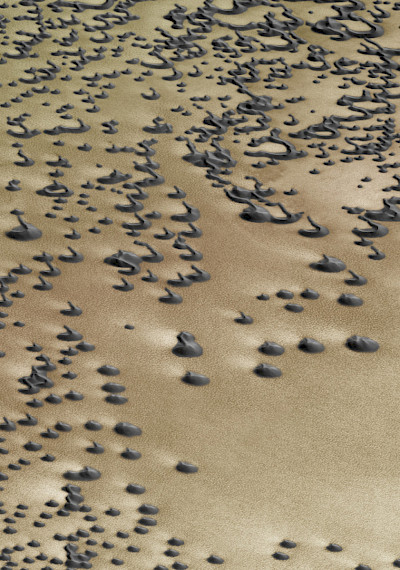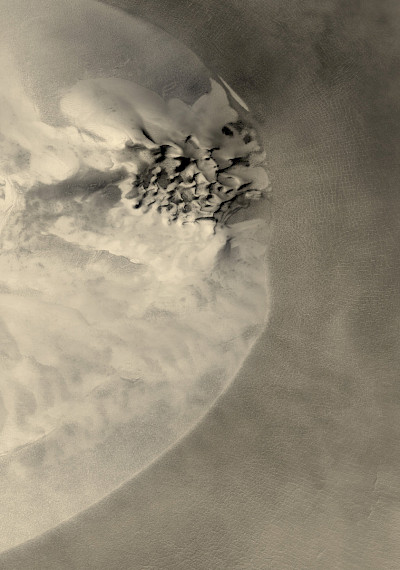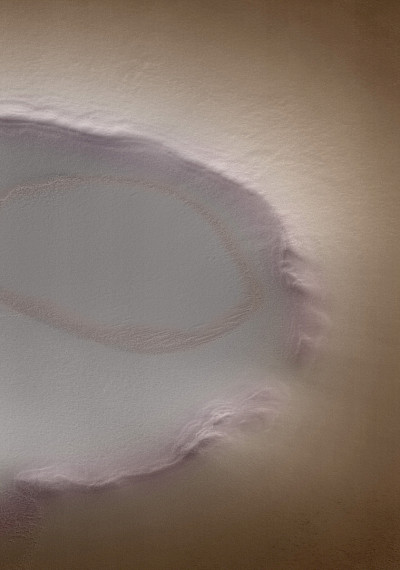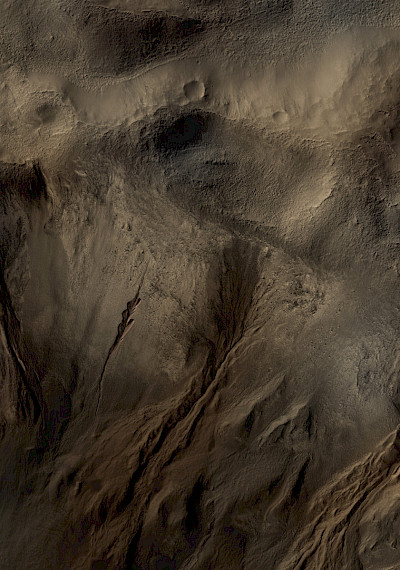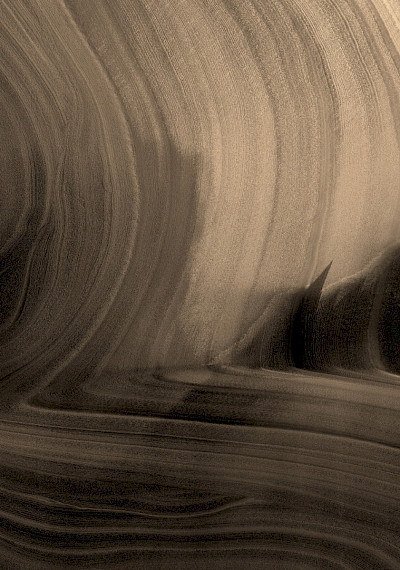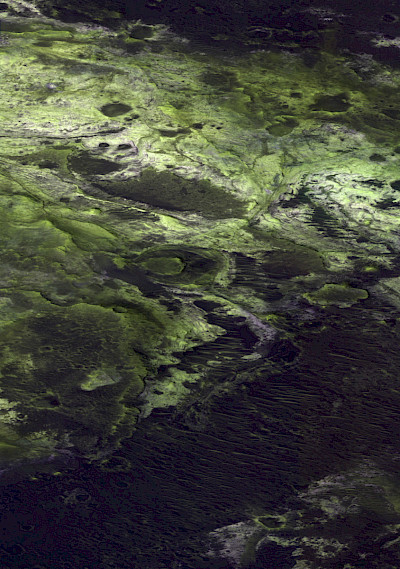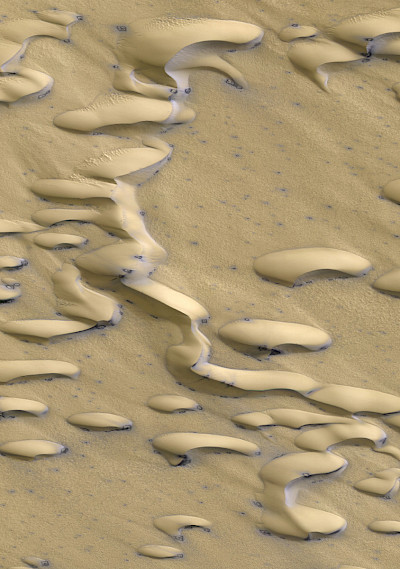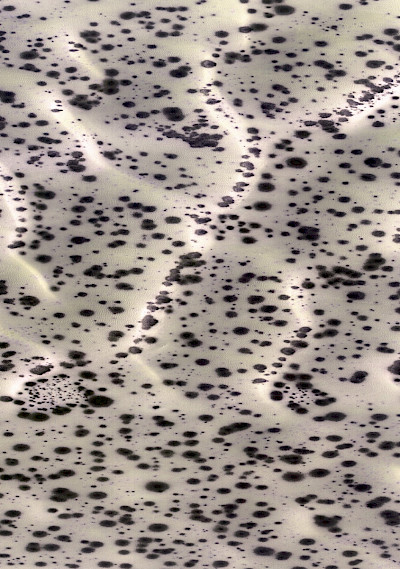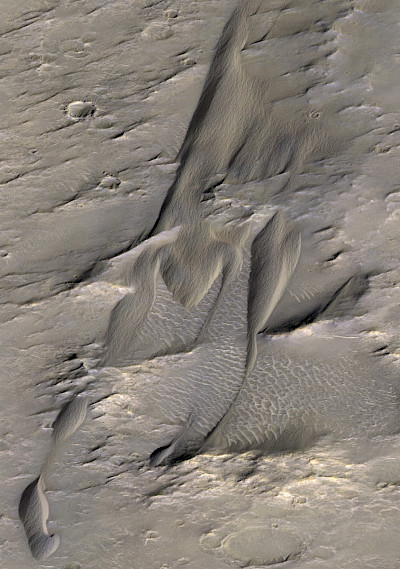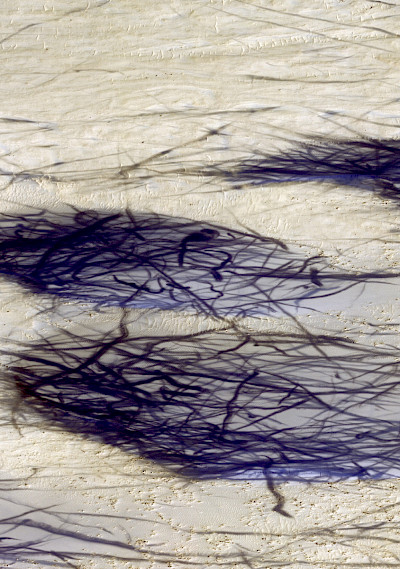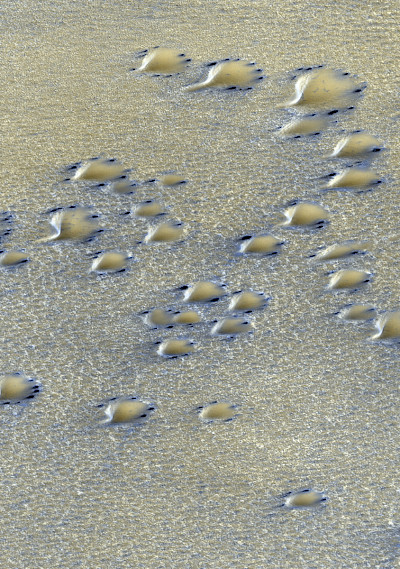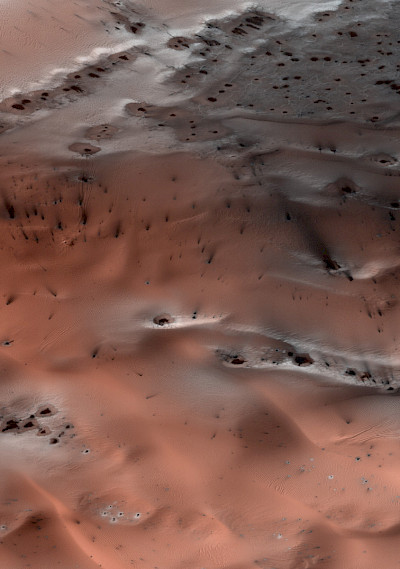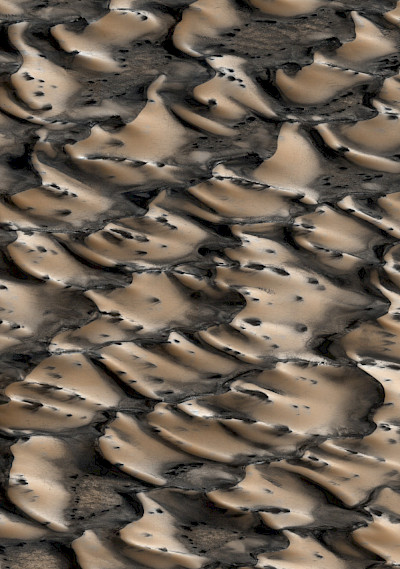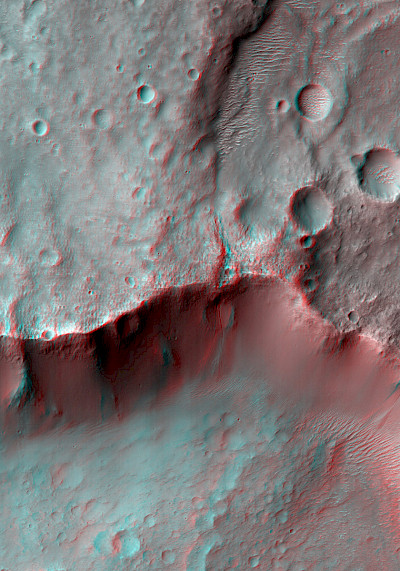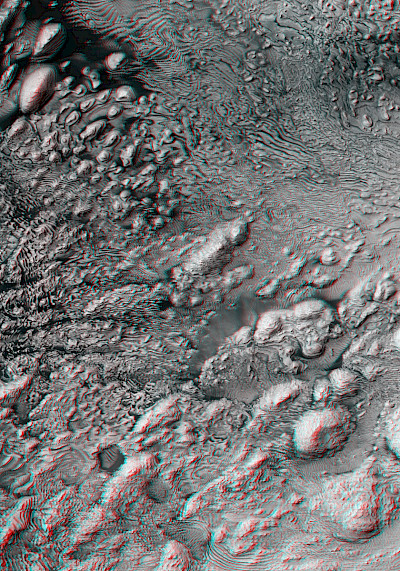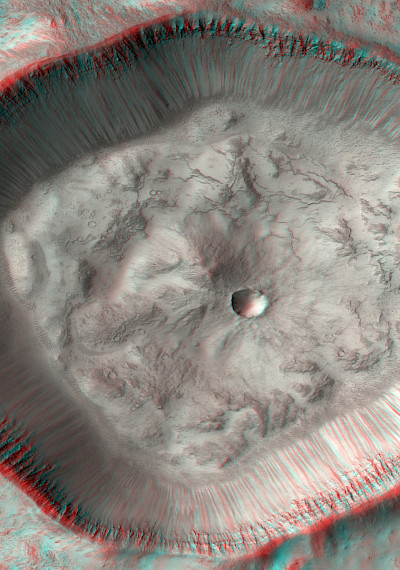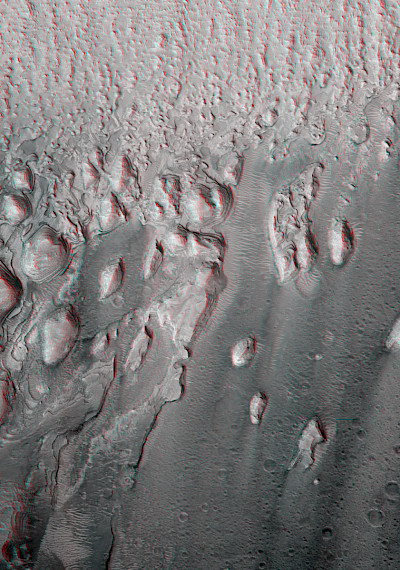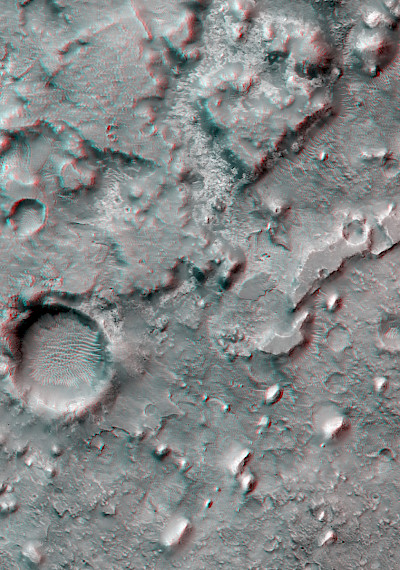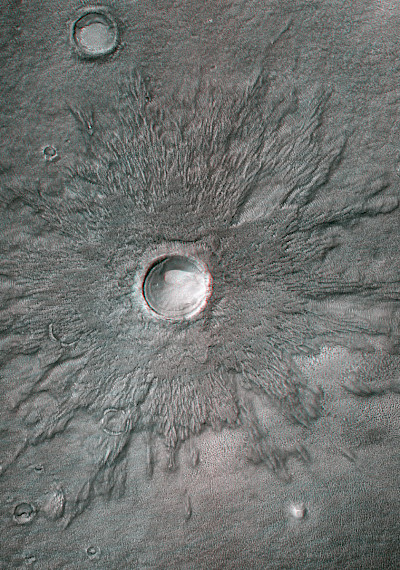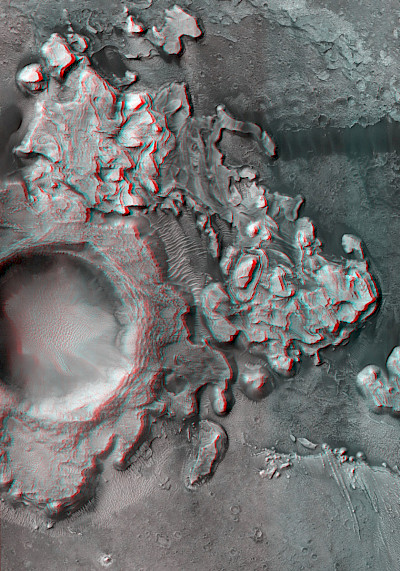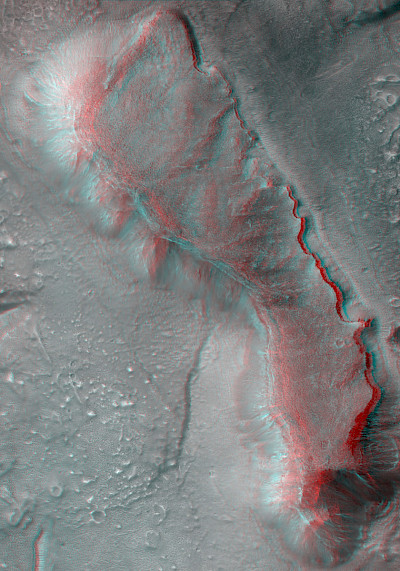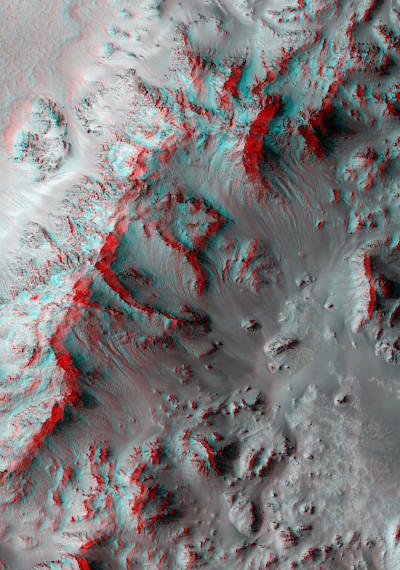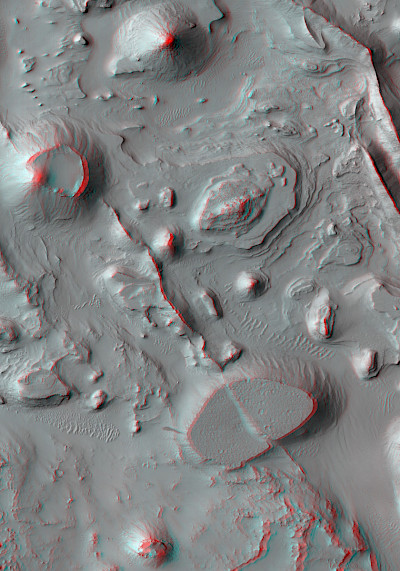ma.r.s.
While conducting research on images from outer space, Thomas Ruff came across photos of Mars taken from 2006 onwards using a HiRISE (High Resolution Imaging Science Experience) camera. The camera is on board the Mars Renaissance Orbiter launched by NASA in August 2005 and transmits via satellite detailed images of the surface of the planet Mars to Earth. The images are intended to provide scientists with more precise knowledge of the surface, atmosphere, and water distribution on Mars. Ruff processed these very naturalistic and yet strange images in several steps: Among other things, he transformed the black-and-white images, which were photographed vertically downwards into views from an angle, and then added color in such that the surface of the distant planet appears immediately accessible and almost familiar.The works in the 3D-ma.r.s. subgroup are photographs that were produced using the so-called anaglyph process. They combine two stereoscopic partial images of the same landscape formation, taken from slightly different positions. These are colored in complementary colors (red/green or red/cyan) and then printed superimposed rather than side by side. The separation of the right and left partial image is done with anaglyph glasses with correspondingly colored lenses or foils. When the image is viewed, the color filters delete the respective color of the partial images and make the complementary color black. Since both eyes see different images as a result, a spatial, three-dimensional image is created in the brain.

ma.r.s.
While conducting research on images from outer space, Thomas Ruff came across photos of Mars taken from 2006 onwards using a HiRISE (High Resolution Imaging Science Experience) camera. The camera is on board the Mars Renaissance Orbiter launched by NASA in August 2005 and transmits via satellite detailed images of the surface of the planet Mars to Earth. The images are intended to provide scientists with more precise knowledge of the surface, atmosphere, and water distribution on Mars. Ruff processed these very naturalistic and yet strange images in several steps: Among other things, he transformed the black-and-white images, which were photographed vertically downwards into views from an angle, and then added color in such that the surface of the distant planet appears immediately accessible and almost familiar.The works in the 3D-ma.r.s. subgroup are photographs that were produced using the so-called anaglyph process. They combine two stereoscopic partial images of the same landscape formation, taken from slightly different positions. These are colored in complementary colors (red/green or red/cyan) and then printed superimposed rather than side by side. The separation of the right and left partial image is done with anaglyph glasses with correspondingly colored lenses or foils. When the image is viewed, the color filters delete the respective color of the partial images and make the complementary color black. Since both eyes see different images as a result, a spatial, three-dimensional image is created in the brain.






